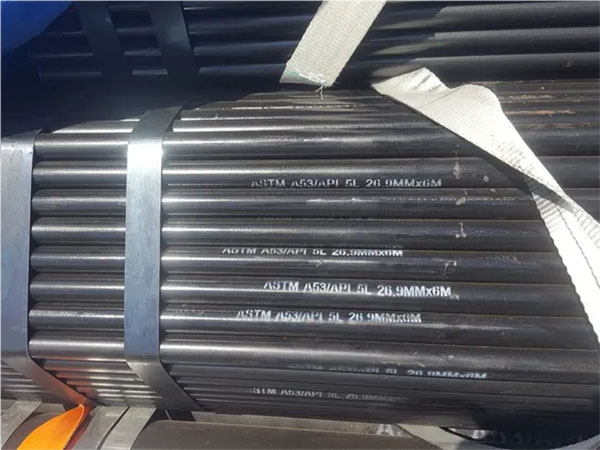ASME is renowned for formulating internationally recognized industrial and manufacturing norms. Its standards cover areas such as boilers, pressure vessels, pipelines, and mechanical components, and it promotes global engineering safety and innovation through technical publications, conferences, and certification programs.
ASME
carbon steel pipes usually refer to seamless and welded carbon steel pipes produced in accordance with ASME B36.10M standard specification dimensions and material specifications such as ASME SA-106 (equivalent to ASTM A106), and are used in industrial applications of high-temperature, high-pressure and general conveying pipeline systems.

ASME standards and specifications for carbon steel pipes
Dimension standard: ASME B36.10M
ASME B36.10M "Dimension Standard for Welded and Seamless Carbon Steel Pipes" specifies the nominal dimensions, outer diameters and wall thicknesses of pipes from NPS 1/8 (DN6) to NPS 80 (DN2000), covering a variety of Schedule (wall thickness grade) configurations.
This standard clearly states that regardless of the Schedule number, the outer diameter of the Pipe under the same NPS (Nominal Pipe Size) is consistent. As the Schedule increases, the wall thickness increases and the inner diameter decreases accordingly.
Material specification: ASME SA-106 / ASTM A106
ASME SA-106 (equivalent to ASTM A106) is the main material specification for seamless carbon steel tubes used in high temperature and high pressure environments. It is classified into Grade A/B/C, among which Grade B is the most commonly used and is applicable to power stations, petrochemicals and other fields. Furthermore, Part A of Volume II of the "Code for Boilers and Pressure Vessels" (BPVC) lists various ferritic materials applicable to pressure vessels and pipelines, including carbon steel (SA-106, SA-53), cryogenic materials (SA-333), alloy steel (SA-335), etc.
Usage specifications of relevant pipelines: ASME B31 series
ASME B31.1 Code for Electrical Piping - Code for Design and Construction of Steam Piping for power stations and thermal power plants.
ASME B31.3 Code for Chemical Piping - Design and construction requirements for piping systems in chemical, petrochemical and petroleum refining industries.
ASME B31.4 to B31.12 etc. Covers other specialized piping systems.
The related products and classification of ASME carbon steel pipes
Seamless carbon steel pipe: Produced in accordance with ASME SA-106, with uniform wall thickness, it is often used in high-temperature and high-pressure environments. It can be further divided into GradeA/B/C, among which Grade B is more widely used.
Welded carbon steel pipes (ERW/LSAW/SSAW) : Mostly used for general water and gas transmission and structural purposes; Reference standards: ASME B36.10M dimensions and ASTM A53 material specifications.
Accessory products: elbows, flanges, tees and pipe caps, etc. Common standards include ASME B16.9 (elbows and tees) and ASME B16.5 (flanges).
Equivalent standard comparison
ASTM A106/A106M (SA-106 seamless) : EN 10216-1 (seamless non-alloy steel), DIN 2448, JIS G3454/G3455, GB/T 8163 (seamless steel for liquid conveyance).
ASTM A53/A53M (welded/seamless) : EN 10217-1 (welded non-alloy steel), DIN 2458, JIS G3441 (alloy steel), GB/T 8162 (seamless structural steel).
ASTM A333/A333M (for low temperatures) : EN 10216-4 (tubes for low temperatures), DIN 17175, JIS G3452, GB/T 5310 (tubes for high pressure boilers).
ASTM A335/A335M (alloy steel) : EN 10216-2 (for high temperature), DIN 17175, JIS G3461, GB/T 5310.
